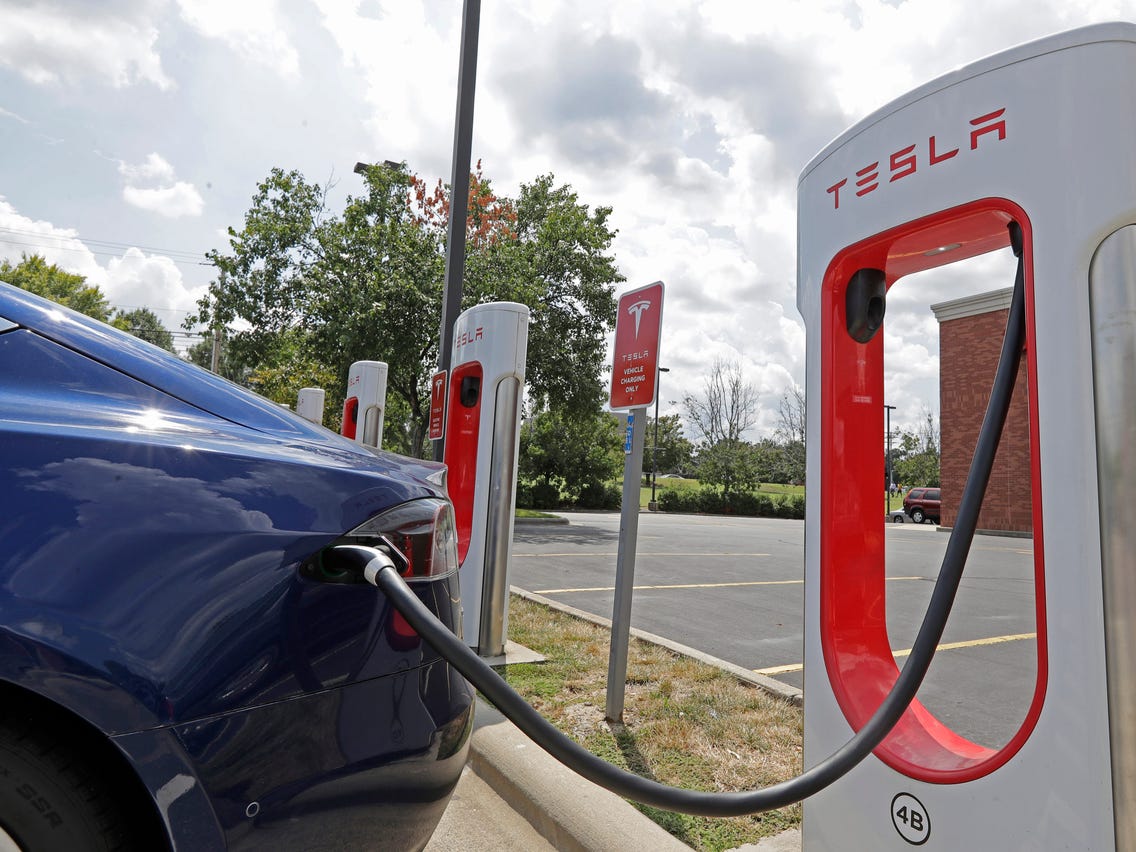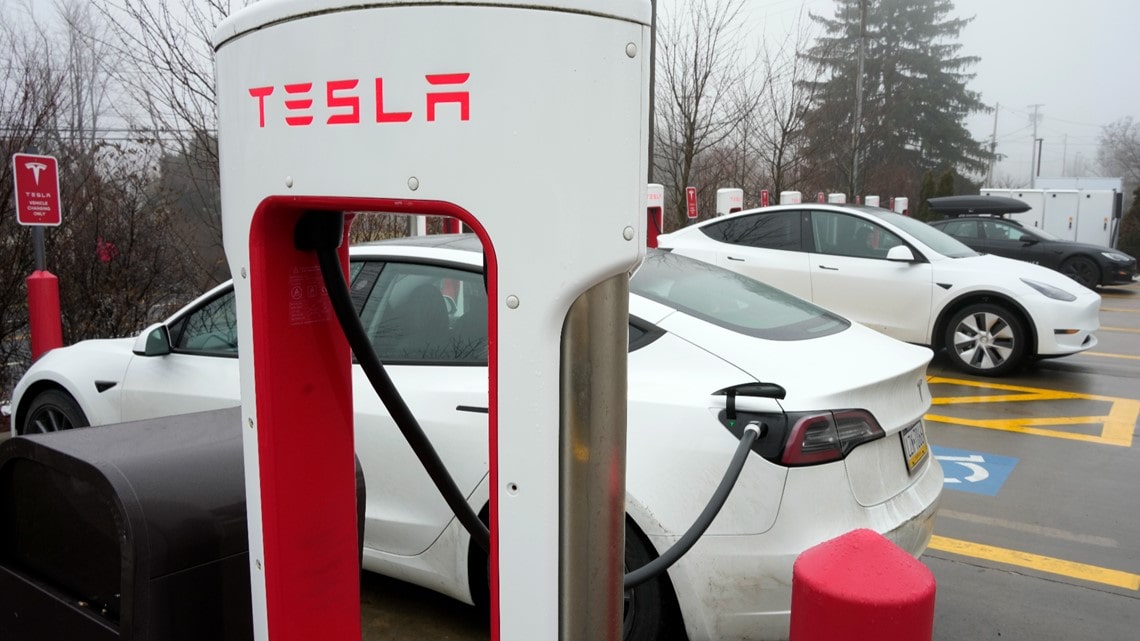Tesla’s NACS connector EV car charging interface is crucial to current global competitors in this field. This interface simplifies the charging process of electric vehicles and makes the future global unified standard the focus.
U.S. automakers Ford and General Motors will adopt Tesla’s North American Charging Standard (NACS) charging connector as the charging interface for their upcoming electric vehicle models. In the days following GM’s June 2023 announcement, a slew of charging station companies including Tritium and other automakers including Volvo, Rivian, and Mercedes-Benz quickly announced they would follow suit. Hyundai is also looking into the possibility of making changes. This shift will make the Tesla Connector the de facto EV charging standard in North America and elsewhere. Currently, many connector companies offer a variety of interfaces to meet the needs of different car manufacturers and regional markets.
Michael Heinemann, CEO of Phoenix Contact Electronics Mobility GmbH, said: “We were very surprised by the dynamics of the NACS discussions over the past few days. As a pioneer in fast charging technology, we will of course follow the decisions of our global customers. We will Providing NACS with high-performance solutions in vehicles and infrastructure. We will provide a timeline and samples shortly.”
CHARX EV charger solution from Phoenix Contact
As electric vehicles become more widely adopted, a complicating factor is the lack of a unified charging connector. Just as the adoption of Type-C USB connectors simplifies charging of smart products, a universal interface for car charging will enable seamless charging of cars. Currently, EV owners must charge at specific charging stations or use adapters to charge at incompatible stations. In the future, using the Tesla NACS standard, drivers of all electric vehicles will be able to charge at every station along the route without using an adapter. Older EVs and other types of charging ports will be able to connect using Tesla’s Magic Dock adapter. However, NACS is not used in Europe. Heinemann said: “Not even Tesla, the charging infrastructure in Europe uses the CCS T2 standard. Tesla charging stations can also charge with CCS T2 (Chinese standard) or the European Tesla connector. “
Current charging scenario
The EV charging connectors currently in use vary by region and car manufacturer. Cars designed for AC charging use Type 1 and Type 2 plugs. Type 1 includes SAE J1772 (J plug). It has charging speeds of up to 7.4 kW. Type 2 includes the Mennekes or IEC 62196 standard for European and Asian vehicles (manufactured after 2018) and is known as SAE J3068 in North America. It is a three-phase plug and can charge up to 43 kW.
Tesla NACS Advantages
In November 2022, Tesla provided NACS design and specification documents to other automakers, saying Tesla’s NACS plug is the most reliable in North America, providing AC charging and up to 1MW DC charging. It has no moving parts, is half the size, and is twice as powerful as the standard Chinese connector. NACS uses a five-pin layout. The same two main pins are used for AC charging and DC fast charging. The other three pins provide similar functionality to the three pins found in the SAE J1772 connector. Some users find NACS’s design easier to use.
The proximity of charging stations to users is a key advantage. Tesla’s Supercharger network is the world’s largest and most mature electric vehicle charging network, with more than 45,000 charging stations capable of charging in 15 minutes and a range of 322 miles. Opening up this network to other vehicles makes charging electric vehicles closer to home and more convenient on longer routes.
Heinemann said: “E-mobility will continue to develop and penetrate all automotive sectors. Especially in the utility vehicle sector, the agricultural industry and heavy construction machinery, the charging power required will be significantly higher than today. This will require establishing Additional charging standards, such as MCS (Megawatt Charging System), will take these new requirements into account.”
Toyota will incorporate NACS ports into select Toyota and Lexus all-electric vehicles starting in 2025, including a new three-row battery-powered Toyota SUV that will be assembled at Toyota Motor Manufacturing Kentucky (TMMK). Additionally, starting in 2025, customers who own or lease an eligible Toyota and Lexus vehicle equipped with the Combined Charging System (CCS) will be able to charge using a NACS adapter.
Toyota said it is committed to providing a seamless charging experience, whether at home or in public. Through the Toyota and Lexus apps, customers have access to an extensive charging network, including more than 84,000 charging ports in North America, and NACS gives users more choice.
According to news on October 18, the BMW Group recently announced that it will begin to adopt the North American Charging Standard (NACS) in the United States and Canada in 2025. The agreement will cover BMW, MINI and Rolls-Royce electric models. Separately, BMW and General Motors, Honda, Hyundai, Kia, Mercedes-Benz and Stellantis announced plans to form a joint venture to build a comprehensive DC fast charger network in the United States and Canada, which is expected to be deployed in metropolitan areas and major highways. Build at least 30,000 new charging stations along highways. The move may be an effort to ensure owners have easy access to reliable, fast charging services, but may also be an effort to remain competitive with other automakers that have announced their inclusion in Tesla’s NACS charging standard.
At present, the charging specifications of (pure) electric vehicles around the world are not the same. They can be mainly divided into American specifications (SAE J1772), European specifications (IEC 62196), Chinese specifications (CB/T), Japanese specifications (CHAdeMO) and Tesla proprietary specifications (NACS). /TPC).
NACS (North American Charging Standard) The North American charging standard is the original charging specification unique to Tesla electric vehicles, formerly known as TPC. In order to obtain U.S. government subsidies, Tesla announced that it would open North American charging stations to all car owners starting in March 2022, and renamed the TPC charging specification to the North American Charging Standard NACS (North American Charging Standard), gradually attracting other car manufacturers to join NACS. Charging Alliance camp.
So far, Mercedes-Benz, Honda, Nissan, Jaguar, Hyundai, Kia and other car companies have announced their participation in the Tesla NACS charging standard.
Post time: Nov-21-2023

 Portable EV Charger
Portable EV Charger Home EV Wallbox
Home EV Wallbox DC Charger Station
DC Charger Station EV Charging Module
EV Charging Module NACS&CCS1&CCS2
NACS&CCS1&CCS2 EV Accessories
EV Accessories


